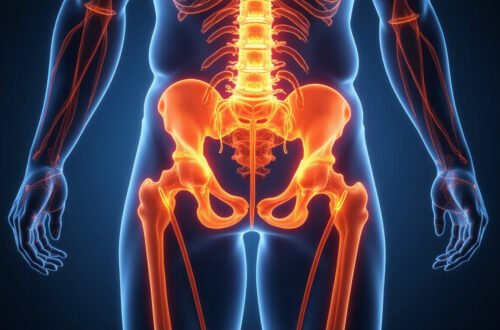If you’ve ever experienced muscle soreness or tightness, you may have heard about foam rolling.
This simple yet powerful technique has gained popularity in recent years for its effectiveness in promoting pain relief and recovery.
But what exactly is foam rolling, and how does it work?
In this article, we will explore the ins and outs of foam rolling for pain relief, delving into the science behind it, discussing the benefits, and offering tips on how to do it safely and effectively.
Whether you’re an athlete looking to enhance performance or someone seeking relief from everyday aches, foam rolling could be the key you’ve been searching for.
Your Sciatica Pain-Free Future Starts Here – Click to Learn More!
Key Takeaways
- Foam rolling can significantly alleviate pain by releasing muscle tension and improving blood flow.
- Understanding the science behind foam rolling helps to maximize its effectiveness for pain relief.
- Regular foam rolling offers numerous benefits, including enhanced flexibility and reduced muscle soreness.
- Learning specific foam rolling techniques allows targeted relief for problem areas in the body.
- Adhering to safety tips ensures a safe and effective foam rolling practice, promoting overall well-being.
Introduction to Foam Rolling and Pain Relief
Foam rolling for pain relief has gained significant popularity in recent years, especially among athletes and fitness enthusiasts.
This self-myofascial release technique involves using a foam roller to apply pressure to certain areas of the body, helping to alleviate muscle tightness and improve overall flexibility.
Many individuals find foam rolling not only beneficial for pre- and post-workout recovery but also effective in managing chronic pain conditions.
By incorporating foam rolling into your routine, you can enhance blood flow, reduce soreness, and ultimately promote better muscle function.
With its ease of accessibility and minimal equipment requirement, foam rolling has become an essential practice for anyone looking to maintain their physical health and well-being.
How Foam Rolling Works: The Science Behind the Technique
Foam rolling for pain relief has gained immense popularity in recent years, and understanding the science behind this technique can help you harness its full potential.
At its core, foam rolling is a form of self-myofascial release, which involves applying pressure to your muscles and fascia using a foam roller.
This technique works by breaking down adhesions and knots in the muscle tissue, promoting blood flow, and enhancing flexibility.
When you roll over a tight area, your nervous system reacts by signaling the muscles to relax, alleviating tightness and reducing discomfort.
Moreover, foam rolling encourages the body’s natural healing process, helping to flush out lactic acid build-up after strenuous workouts, making it an essential practice for athletes and fitness enthusiasts alike.
By integrating foam rolling for pain relief into your routine, you can improve muscle recovery and maintain peak performance, ultimately leading to a more active lifestyle.
‘The body achieves what the mind believes.’ – Anonymous
Benefits of Foam Rolling for Pain Relief
Foam rolling for pain relief has gained significant popularity among fitness enthusiasts and rehabilitation professionals alike.
This simple yet effective technique involves using a foam roller to apply pressure to specific areas of the body, helping to release tension in muscles and fascia.
One of the primary benefits of foam rolling is its ability to enhance blood circulation, which promotes healing and reduces soreness post-exercise.
Furthermore, regular foam rolling can improve flexibility and range of motion, making it an ideal addition for athletes looking to enhance their performance.
Many users report a noticeable decrease in pain, particularly in tight or sore areas, as foam rolling helps to break down muscle knots and alleviate discomfort.
Additionally, this method is highly accessible and can be done at home, making foam rolling for pain relief an excellent choice for anyone seeking an easy and cost-effective way to manage muscle aches and recover from workouts.
Your Sciatica Pain-Free Future Starts Here – Click to Learn More!
Popular Foam Rolling Techniques for Targeting Pain Points
Foam rolling for pain relief has surged in popularity among fitness enthusiasts and wellness seekers alike, thanks to its effectiveness in alleviating muscle tension and soreness.
One of the most widely used techniques involves the quadriceps roll, where you place the foam roller under your thighs and slowly glide it up and down, focusing on any tight spots.
This technique not only provides immediate relief by massaging the muscle tissue but also enhances blood flow, promoting faster recovery.
Another effective method is the upper back release, where you position the roller along your spine and gently roll from side to side; this can help alleviate the discomfort caused by prolonged sitting or poor posture.
Additionally, the glute roll targets the often neglected hip area: simply sit on the foam roller and maneuver your weight to find sore spots, which can significantly reduce lower back pain and tension.
Incorporating these foam rolling techniques into your daily routine can be an excellent strategy for effective pain management.
Safety Tips and Best Practices for Foam Rolling
Foam rolling for pain relief is an increasingly popular technique that can greatly aid in muscle recovery and alleviate discomfort.
However, it’s essential to follow safety tips and best practices to maximize its benefits while minimizing the risk of injury.
First, ensure that you’re using the right type of foam roller; a softer roller is ideal for beginners while firmer options are better for experienced users.
When rolling, target specific muscle groups but avoid bony areas and joints to prevent excessive pressure that could cause injury.
It’s also advisable to roll slowly over each area, spending about 20-30 seconds on tighter spots to allow your muscles to relax.
Lastly, hydrate after your session, as foam rolling can release toxins from your muscles, and staying hydrated helps to flush them out.
Incorporating these safety tips into your foam rolling routine can enhance your overall experience and effectiveness, making it a staple for pain relief and muscle maintenance.
FAQs
What is foam rolling and how does it help with pain relief?
Foam rolling is a self-myofascial release technique that uses a foam roller to apply pressure to specific areas of the body.
This practice helps to release muscle tightness, improve blood circulation, and reduce pain, making it an effective tool for pain relief.
What are the benefits of foam rolling for pain relief?
Foam rolling offers several benefits, including reduced muscle soreness, improved flexibility and range of motion, enhanced recovery post-exercise, decreased risk of injury, and overall relief from chronic pain conditions.
Are there specific techniques for foam rolling pain points?
Yes, there are several techniques for effectively targeting pain points, such as rolling over muscles in a slow, controlled manner, holding pressure on particularly tight areas for 20-30 seconds, and incorporating different angles and movements to fully engage the muscle.
Is foam rolling safe for everyone?
While foam rolling is generally safe for most individuals, it’s important to follow safety tips such as starting with lighter pressure, avoiding rolling directly over joints or bones, and consulting with a healthcare professional if you have specific injuries or conditions.
How can I incorporate foam rolling into my pain relief routine?
To incorporate foam rolling into your routine, aim to include it as part of your warm-up before workouts or your cool-down afterward.
Additionally, set aside specific times during the week for foam rolling sessions focused on particular areas of muscle tightness or pain.






